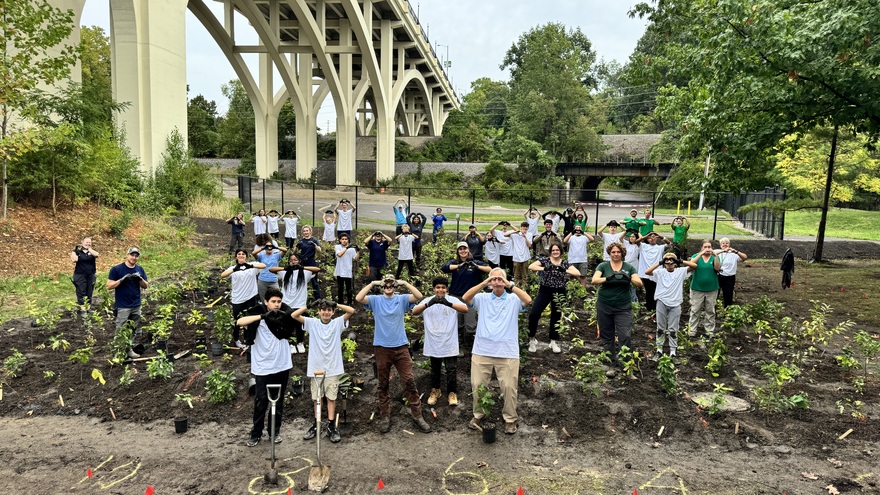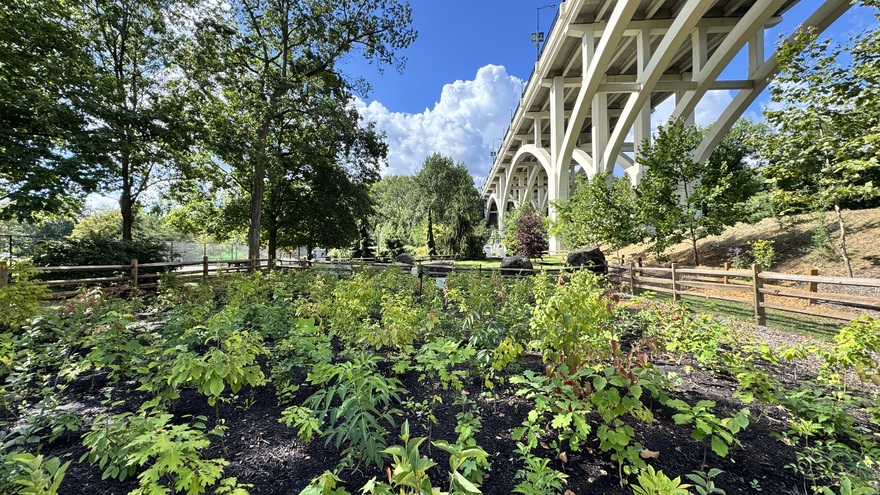A Year of Growth: Checking in on the Zoo’s Mini-Forest
Posted on Monday, September 22nd, 2025
Last September, your Zoo worked with Paul Abbey of local nonprofit Rooted in Trees, Zoo horticulturists, the Holden Arboretum's Green Corps, and eighth graders from Urban Community School to plant the first ever mini-forest in a United States zoo.
The 850 trees and shrubs did not look like much at the time, but they have shown healthy growth in their first year, and it is becoming easier to imagine this pocket-sized ecosystem taking shape.
Zoo News 2.0: Checking in on the Zoo's Mini-Forest
Mini-forests using the Miyawaki Method of dense planting grow ten times faster than typical forests as the trees compete with – and support – one another. “In three years, the forest will be self-sufficient, and the trees will share nutrients and fungi,” Abbey said. Zoo horticulturists will support it as it grows, monitoring the site and protecting the burgeoning trees and shrubs with leaf mulch and fencing.

Rooted in Trees, Zoo horticulturists, the Holden Arboretum's Green Corps, and eighth graders from Urban Community School celebrate after they completed planting the mini-forest in 2024
The mini-forest site, located just down the hill from Rosebrough Tiger Passage, holds multiple dimensions of value and significance. It embodies the Zoo’s focus on forests and investment in habitat protection both locally and around the world. The mini-forest itself will become a lush habitat space for local wildlife such as birds and insects, and will contribute to the soil health of the area. For Zoo guests, it is a new space to explore. This area, previously not open to guests, is now a peaceful place to picnic or just rest and reflect among local flora and fauna.
“What was once just a plan on paper is now a beautiful and thriving green space,” Abbey reflected, “a testament to how quickly nature can flourish with a bit of care and the right approach."
Next time you visit the Zoo, be sure to check out the mini-forest!

The Zoo's mini-forest one year after planting



